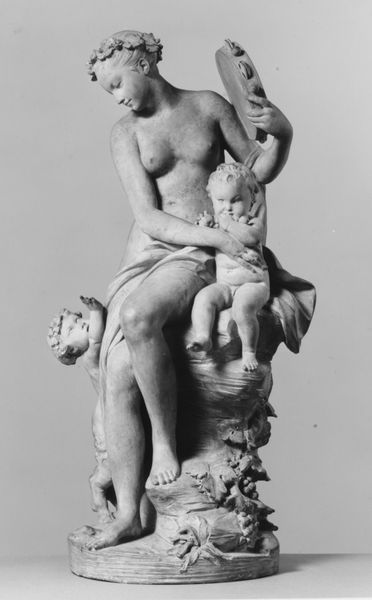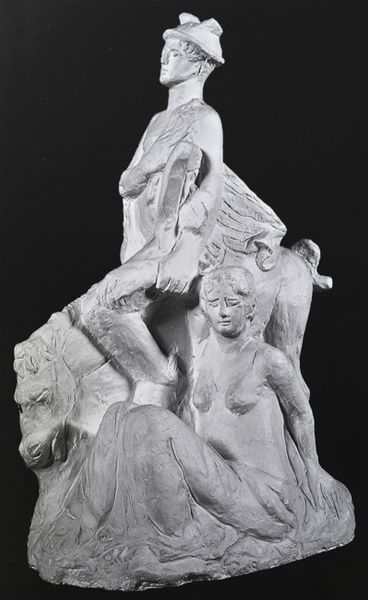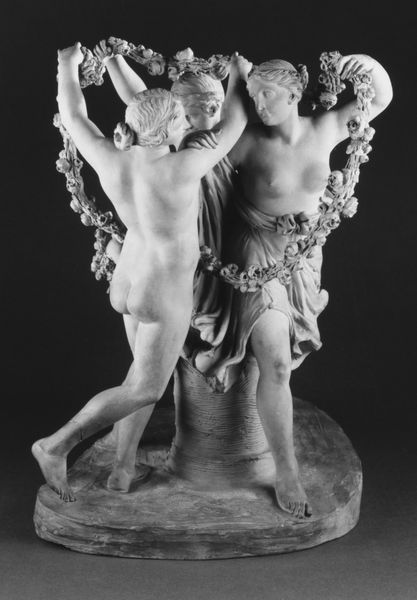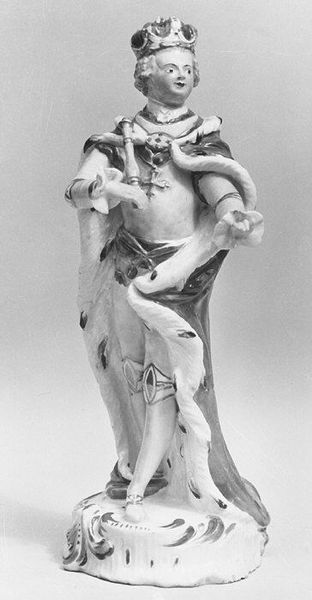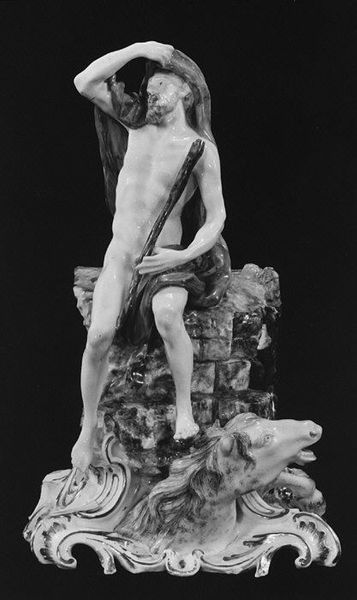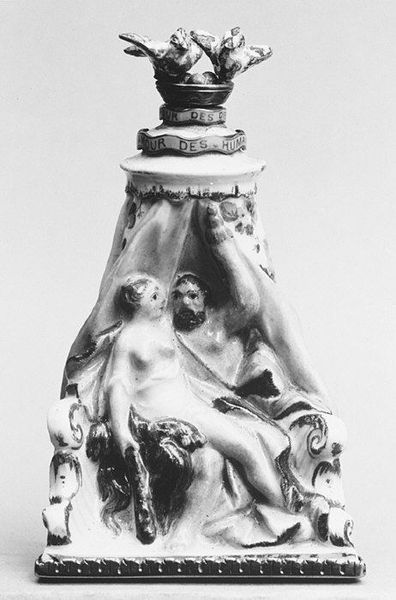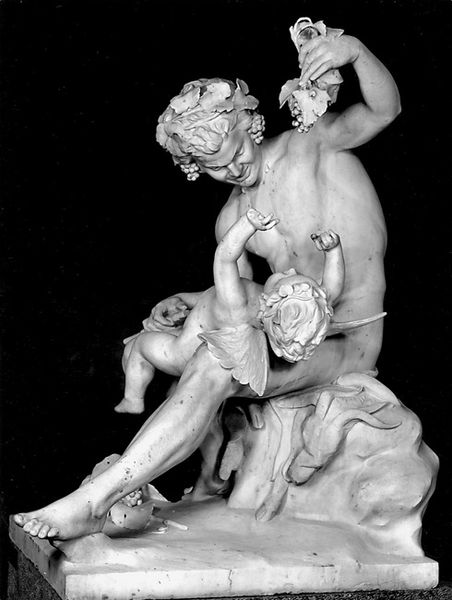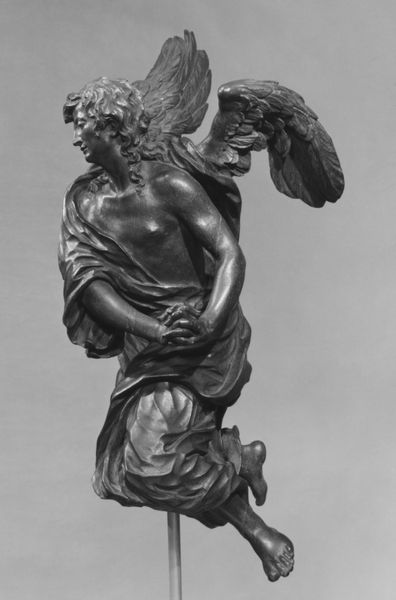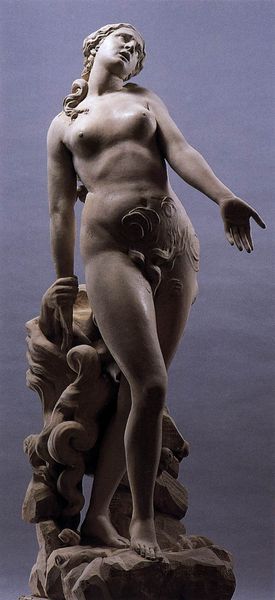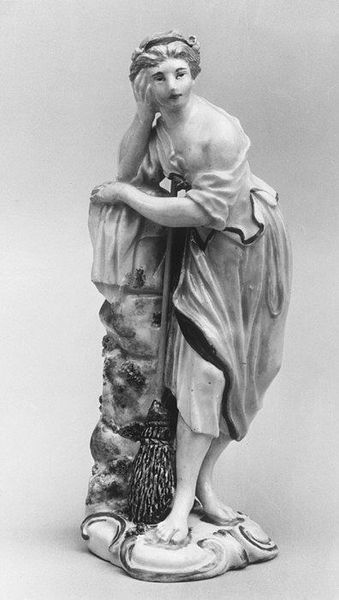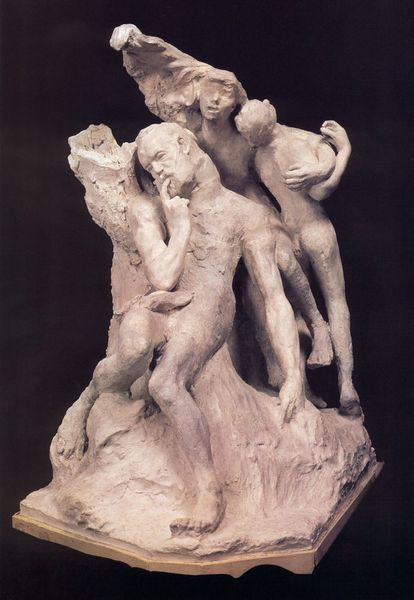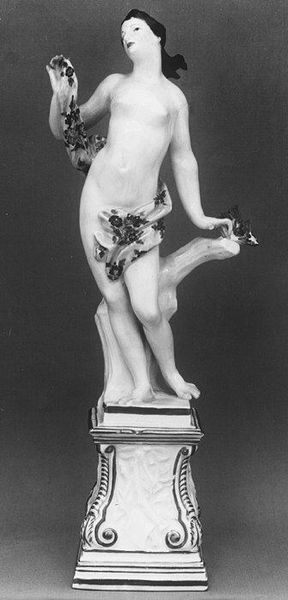
ceramic, porcelain, sculpture
#
allegory
#
neoclassicism
#
sculpture
#
ceramic
#
porcelain
#
figuration
#
sculpture
#
decorative-art
#
statue
Dimensions: Height: 8 1/8 in. (20.6 cm)
Copyright: Public Domain
Editor: Right, next up, we have 'Africa,' a porcelain sculpture created by the Frankenthal Porcelain Manufactory around 1760-1770. It's currently housed in the Metropolitan Museum of Art. My first impression is how incredibly detailed the ornamentation is! I'm also struck by how idealized and frankly... weird, the depiction feels. What stands out to you in this piece? Curator: Ah, "Africa." It whispers tales of a Europe wrestling with its understanding of the world, doesn't it? Or, perhaps, more accurately, projecting its fantasies. Notice the details – the headdress adorned with what appear to be a swan’s head and neck, the exoticized figure presented beside what could be an urn, embellished with sharp-looking vegetal ornaments. Now, isn't it curious how ‘Africa’ is rendered here? What assumptions do you think went into its making? Editor: It seems… contradictory. There’s an attempt to represent 'Africa' through symbols, but they feel more like European inventions than genuine reflections of the continent. Is it an example of 'Orientalism'? Curator: Indeed. There is very little actual Africa in this, and too much "Europe looking at an idea of Africa," don't you think? This era was captivated by classifications and ‘representing’ otherness. It also coincides with increased trade and colonial ambition, and art inevitably reflects that complicated reality. Think of porcelain itself, how it traveled the world, and the wealth it symbolized! How does that influence your read of the work now? Editor: It makes me more aware of the power dynamics at play. The sculpture is beautiful, yes, but also serves as a stark reminder of a past where entire continents were reduced to exoticized tropes for European consumption. I almost wish the swan wasn't there! Curator: Perhaps that’s the genius of it: forcing us to confront the uncomfortable legacy baked into even the most beautiful objects. Editor: Definitely. It's far more than a pretty porcelain; it's a loaded historical document.
Comments
No comments
Be the first to comment and join the conversation on the ultimate creative platform.

